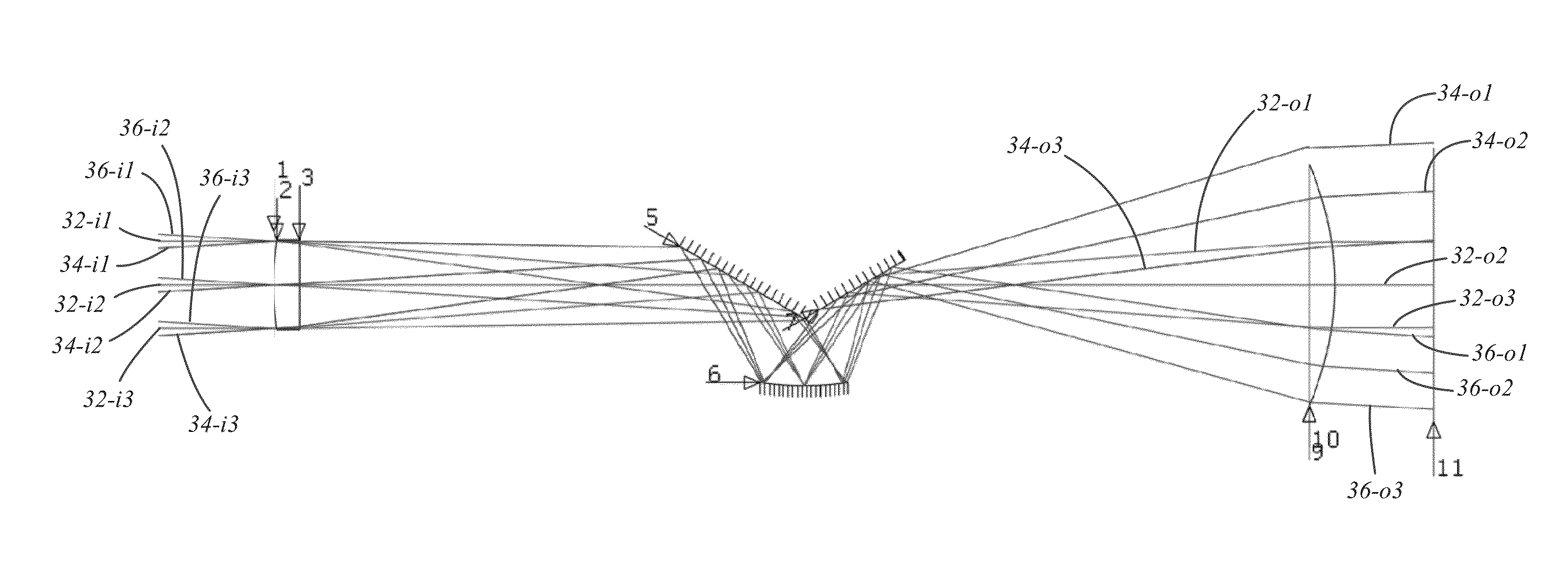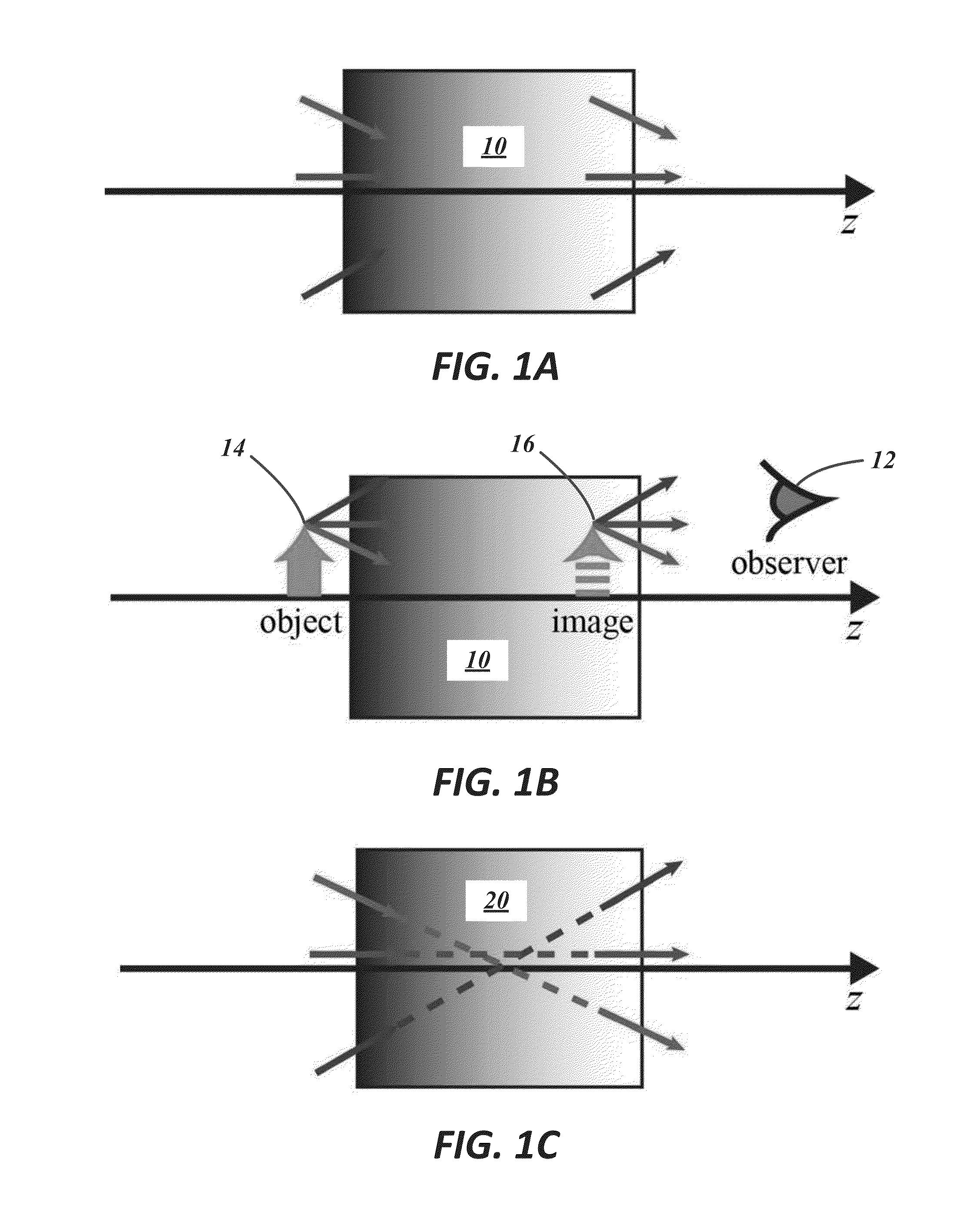Paraxial cloak design and device
a technology of paraxial cloaks and cloaks, applied in camouflage devices, optical elements, instruments, etc., can solve the problems of unidirectional incident light schemes, difficult experimentation realization of such transformational optics, and non-unity magnification, etc., and achieve the effect of reducing aberrations
- Summary
- Abstract
- Description
- Claims
- Application Information
AI Technical Summary
Benefits of technology
Problems solved by technology
Method used
Image
Examples
example three
Lens Cloak Parameters
[0112]For the first and last lenses (1 and 3) 200 mm focal length, BK7, 75 mm diameter lenses were used. For the center lens, two −100 mm focal length, BK7, 50 mm diameter lenses were used, back-to-back, to create a lens with focal length of approximately −50 mm. All lenses were catalogue optics from Edmund Optics. From equation (24), t1=t2 equals approximately 100 mm was obtained. Including the lens thicknesses and the material indices of refraction, t1 was optimized slightly so that the afocal condition C=0 was closely achieved. Diameter of last lens needs to be >150 mm for all rays to pass (no “vignetting”). For the CODE V simulation, the apertures were not restricted to the actual lens sizes. The aperture stop was the first surface. Aperture diameter sizes (for no vignetting) of the first and second diverging lenses in the center are 54 mm and 61 mm, respectively. Total length of the system is 219 mm.
Example Four Lens Cloak
[0113]A four lens ‘ideal’ paraxial ...
example four
Lens Cloak Parameters
[0116]For the first and last lenses (1 and 4), 200 mm focal length, 50 mm diameter achromatic doublets composed of BK7 and SF2 glasses were used. For the center two lenses (2 and 3), 75 mm focal length, 50 mm diameter achromatic doublets composed of SF11 and BAF11 glasses were used. All doublets were off-the-shelf catalogue optics from Thorlabs and had antireflection coating in the visible spectrum. For the CODE V simulations, the aperture sizes were not restricted, so as to ensure no vignetting. The aperture stop was the first surface. Diameters of the second, third, and last doublets need to be >33 mm, 51 mm, and 112 mm, respectively, for no vignetting. Total length of the system is 910 mm.
[0117]Extending Paraxial Cloaking to Include the Full Field
[0118]We now discuss non-limiting examples of paraxial cloaks that work for the full-field (matched amplitude and phase). FIG. 32 schematically shows one example of a full field paraxial cloak. In FIG. 32, the image ...
PUM
 Login to View More
Login to View More Abstract
Description
Claims
Application Information
 Login to View More
Login to View More - R&D
- Intellectual Property
- Life Sciences
- Materials
- Tech Scout
- Unparalleled Data Quality
- Higher Quality Content
- 60% Fewer Hallucinations
Browse by: Latest US Patents, China's latest patents, Technical Efficacy Thesaurus, Application Domain, Technology Topic, Popular Technical Reports.
© 2025 PatSnap. All rights reserved.Legal|Privacy policy|Modern Slavery Act Transparency Statement|Sitemap|About US| Contact US: help@patsnap.com



